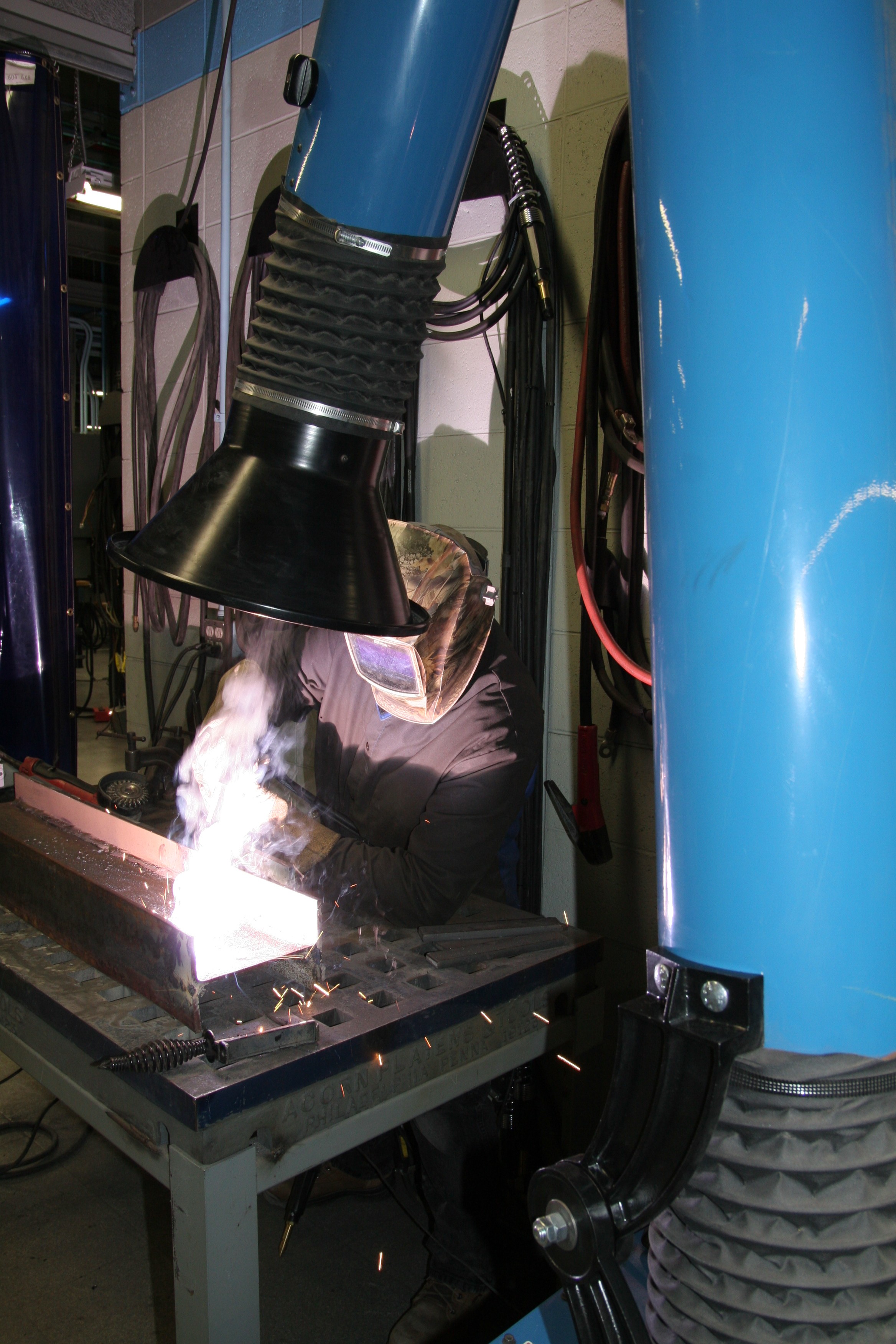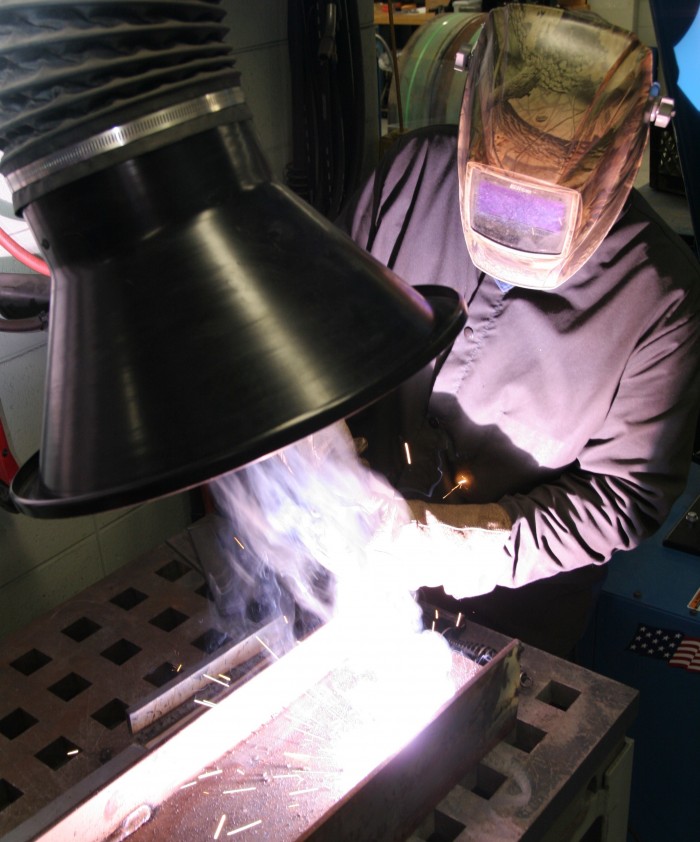Five Considerations When Purchasing a Fume Extraction System
In today’s market, highly skilled welders can choose where they want to work. An important factor for any company to recruit and retain skilled welders is to have a clean, healthy work environment. For this reason, it is critical for a company to have a reliable fume extraction system to maintain a clean and safe work environment.
Posted: March 20, 2012
Fume extraction systems offer additional advantages, such as reductions in overhead and operating expenses. Companies that integrate a fume extraction system into their welding operations are also better positioned to negotiate favorable liability and health insurance rates with their insurers. Also, fume extraction systems help companies comply with OSHA regulations and reduce their employees’ exposures to hexavalent chromium. Additionally, fume extraction systems decrease a company’s maintenance costs and increase the lifespan of all equipment in the welding shop.
Companies should give thoughtful consideration in choosing the best fume extraction system for their business. Here are some features companies should evaluate when selecting a fume extraction system.
1. Type of Fume Extraction System
There are three basic ways to provide respiratory protection: engineered systems, source capture devices and personal air-powered respirators (PAPRs). Many employers elect to use a combination of methods to ensure workers’ safety.
Engineered systems are the most expensive way to provide respiratory protection. They involve the installation of fans and ductwork to remove welding fumes from an area. These systems effectively remove fumes from an area but may not protect the individual welder as they typically do not capture at the source. Source capture devices remove welding fumes directly at the arc, filtering the fumes and releasing cleaned air back into the work environment.
PAPRs use an air filter and blower to circulate clean air into the welding helmet. This type of respiratory protection is particularly effective when welding in confined areas or when source capture is not feasible. Although PAPRs provide sufficient protection for individual operators, they do not address the underlying issue of fumes in the welding shop.
2. The Filter
Evaluating the type of filter in a fume extraction system is the single most important factor to consider when purchasing a fume extraction system. Many fume extraction systems are manufactured with filters that have not been designed specifically to collect the submicron particles found in welding fumes.
The most accurate rating system for measuring the effectiveness of filters is the Minimal Efficiency Reporting Value (MERV), which reflects the effectiveness of a filter based on the size of the particles it can capture. Standard cellulose filters rate a 7 to 10 on the MERV scale and some spun-bound polyesters rate an 11. Neither of these filters are very efficient at capturing particles smaller than 1 micron.
Nanofiber filters, with a MERV rating of 15, immediately capture up to 95 percent of submicron particles found in welding fumes and quickly begin to filter out up to 99.998 percent of submicron particles. Compared to standard filters, nanofiber filters have considerably less pressure drop as the filter loads with fume particles. Since nanofiber filters require less cleaning than standard filters, they will also last longer before needing to be replaced.
3. Airflow
The third factor to consider in evaluating fume extraction systems is airflow. All fume extraction systems are rated based on the amount of cubic feet of air they circulate each minute. Because manufacturers measure and advertise the effectiveness of fume extraction systems differently, the correct amount and type of airflow depends on a wide variety of factors. Consult a welding distributor or fume extraction system manufacturer to help determine the best extraction system for your welding application.
4. Disposable vs. Self-Cleaning
Single-cartridge fume extraction systems are available as either disposable or self-cleaning units. Disposable units use filters that are designed to be discarded when the filters reach their capacities. Disposable models offer lower up-front costs; however, the recurring expense of replacing disposable filters can increase the overall cost.
Although their initial cost is higher, self-cleaning models provide ongoing cost savings since their filters are reusable. Some self-cleaning fume extraction systems require the presence of an operator during the cleaning process. Selecting a self-cleaning fume extraction system that contains a nanofiber filter and utilizes a short cleaning cycle can reduce downtime and lost productivity.
5. Other Considerations
Companies should consider other features, such as ease of use, accessibility to the filter, and manufacturers’ routine maintenance recommendations. A product demonstration will allow an evaluation of the noise the fume extraction system generates and its ease of maneuverability.
Maintaining a safe and healthful environment is an appealing incentive for new and current employees. A fume extraction system can extend equipment life, reduce insurance rates and help companies comply with federal regulations. Despite their initial costs, a fume extraction system is an investment that pays many dividends.
Editor’s Note: Al Hilbert, a fume extraction product specialist with Miller Electric Mfg. Co. that has twenty years of experience in the welding industry, also contributed to this story.







